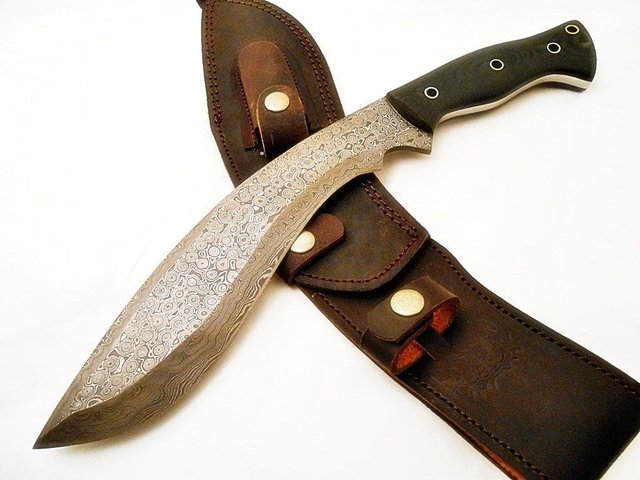
Selecting the best hunting knife is crucial for any hunting enthusiast. The right knife is not just a tool; it’s an essential piece of equipment that ensures safety, efficiency, and success in the field. With numerous options available, making an informed choice can be overwhelming. This guide aims to simplify the decision-making process by highlighting key factors to consider when choosing the perfect hunting knife.
However, in case you aim to get a bowie knife, or a kukri knife, you can check out Battling Blades.
1. Understanding the Types of Hunting Knives
There are several types of hunting knives, each designed for specific tasks. The main types include:
• Fixed-Blade Knives: These are sturdy and reliable, ideal for heavy-duty tasks like skinning and gutting. They don’t have moving parts, which makes them easier to clean and maintain.
• Folding Knives: These are compact and convenient to carry. Folding knives are versatile but might not be as durable as fixed-blade knives for more strenuous tasks.
• Gut Hook Knives: These feature a hook on the blade's spine for opening the abdomen of game animals without damaging the internal organs. They are specialized but highly effective for field dressing.
• Boning Knives: Designed for separating meat from bones, these knives have thin, flexible blades that are perfect for detailed work.
2. Blade Material
The blade material significantly impacts the knife’s performance, durability, and ease of maintenance. Common materials include:
• Stainless Steel: Known for its corrosion resistance and ease of maintenance. However, it might require frequent sharpening.
• Carbon Steel: Offers excellent edge retention and durability but is prone to rust and requires regular maintenance.
• High Carbon Stainless Steel: Combines the best of both worlds, offering good edge retention and corrosion resistance.
3. Blade Design
The blade design affects how well the knife performs specific tasks. Important design aspects include:
• Blade Shape: Common shapes are drop point, clip point, and skinning blades. Drop point blades are versatile and durable, clip point blades are good for detailed work, and skinning blades are specialized for skinning animals.
• Blade Edge: Plain edges are ideal for clean cuts, while serrated edges are better for cutting through tough materials. Some knives feature a combination of both.
4. Handle Material and Design
The handle should provide a comfortable, secure grip to ensure precision and safety. Handle materials vary widely:
• Wood: Traditional and aesthetically pleasing, but may not be as durable or resistant to the elements.
• Synthetic Materials (e.g., G-10, Micarta): Durable, water-resistant, and provide excellent grip.
• Rubber: Offers a secure grip even when wet but might wear out faster than synthetic materials.
5. Size and Weight
The size and weight of the hunting knife should match the user’s needs and preferences. Larger knives are more suitable for heavy-duty tasks, while smaller knives offer better control for detailed work. The knife should also be lightweight enough to carry comfortably for extended periods. You can even check out a kukri knife.
6. Tang Construction
The tang is the portion of the blade that extends into the handle. Full tang knives, where the tang extends the entire length of the handle, are generally stronger and more durable. Partial tang knives might be lighter but are less durable.
7. Sheath and Carry Options
A good sheath protects the blade and the user and provides a safe way to carry the knife. Sheaths are typically made from leather, nylon, or Kydex. Leather sheaths are traditional and durable, nylon sheaths are lightweight and inexpensive, while Kydex sheaths offer excellent retention and durability. Additionally, consider the carry options, such as belt loops or MOLLE compatibility, to ensure the knife is easily accessible.
8. Brand and Warranty
Established brands often offer better quality and reliability. Brands like Benchmade, Buck, Gerber, and Ka-Bar have long-standing reputations for producing high-quality hunting knives. A good warranty can provide peace of mind and protection against defects.
Final Words
Choosing the best involves careful consideration of various factors. Remember, a well-chosen knife is not just a tool but an extension of the hunter, contributing to both safety and success. Whenever it comes to choosing the best blade, make sure you visit Battling Blades. Surely, you won’t regret your choice.